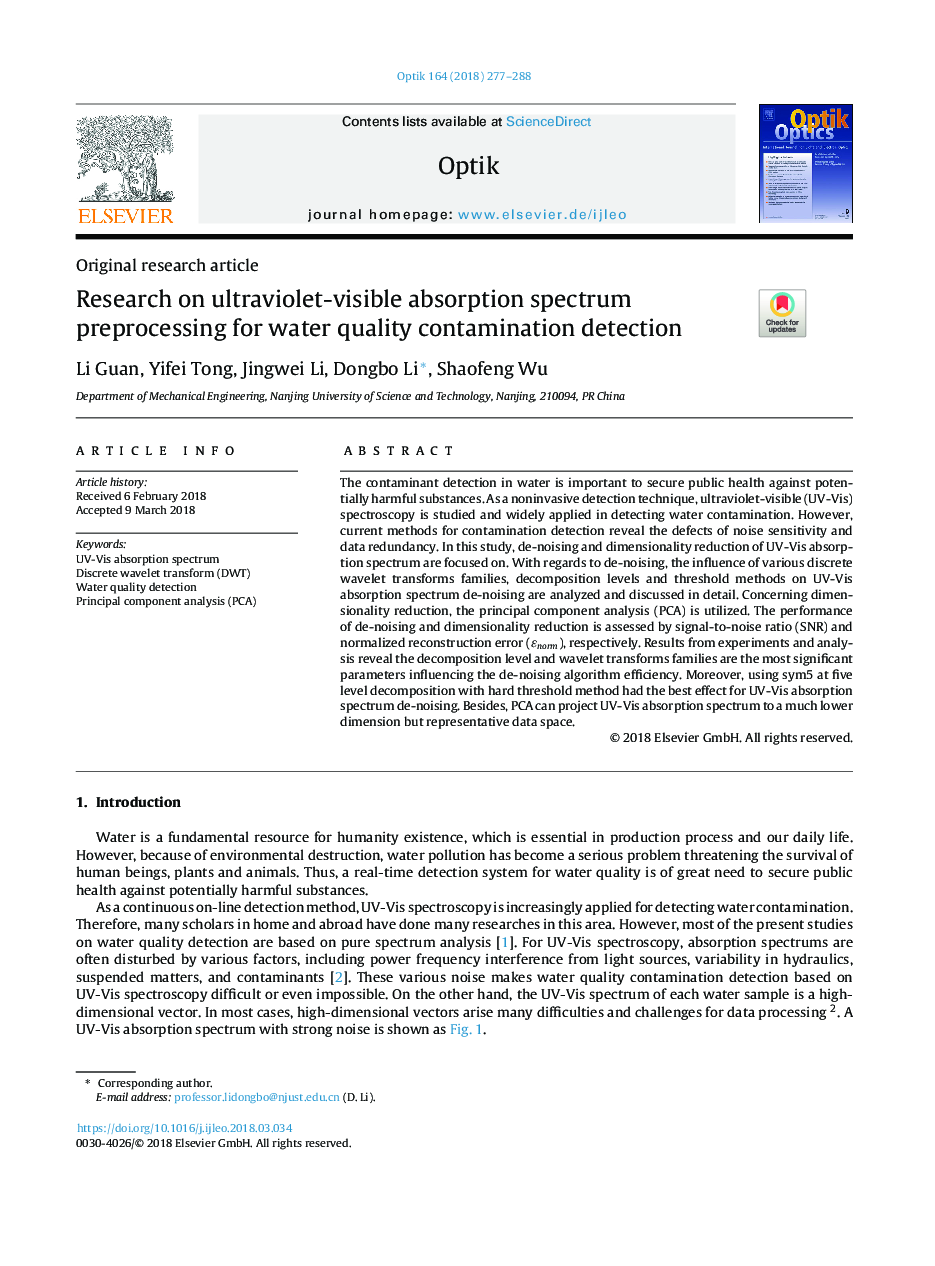| Article ID | Journal | Published Year | Pages | File Type |
|---|---|---|---|---|
| 7223843 | Optik - International Journal for Light and Electron Optics | 2018 | 12 Pages |
Abstract
The contaminant detection in water is important to secure public health against potentially harmful substances. As a noninvasive detection technique, ultraviolet-visible (UV-Vis) spectroscopy is studied and widely applied in detecting water contamination. However, current methods for contamination detection reveal the defects of noise sensitivity and data redundancy. In this study, de-noising and dimensionality reduction of UV-Vis absorption spectrum are focused on. With regards to de-noising, the influence of various discrete wavelet transforms families, decomposition levels and threshold methods on UV-Vis absorption spectrum de-noising are analyzed and discussed in detail. Concerning dimensionality reduction, the principal component analysis (PCA) is utilized. The performance of de-noising and dimensionality reduction is assessed by signal-to-noise ratio (SNR) and normalized reconstruction error (εnorm), respectively. Results from experiments and analysis reveal the decomposition level and wavelet transforms families are the most significant parameters influencing the de-noising algorithm efficiency. Moreover, using sym5 at five level decomposition with hard threshold method had the best effect for UV-Vis absorption spectrum de-noising. Besides, PCA can project UV-Vis absorption spectrum to a much lower dimension but representative data space.
Related Topics
Physical Sciences and Engineering
Engineering
Engineering (General)
Authors
Li Guan, Yifei Tong, Jingwei Li, Dongbo Li, Shaofeng Wu,
